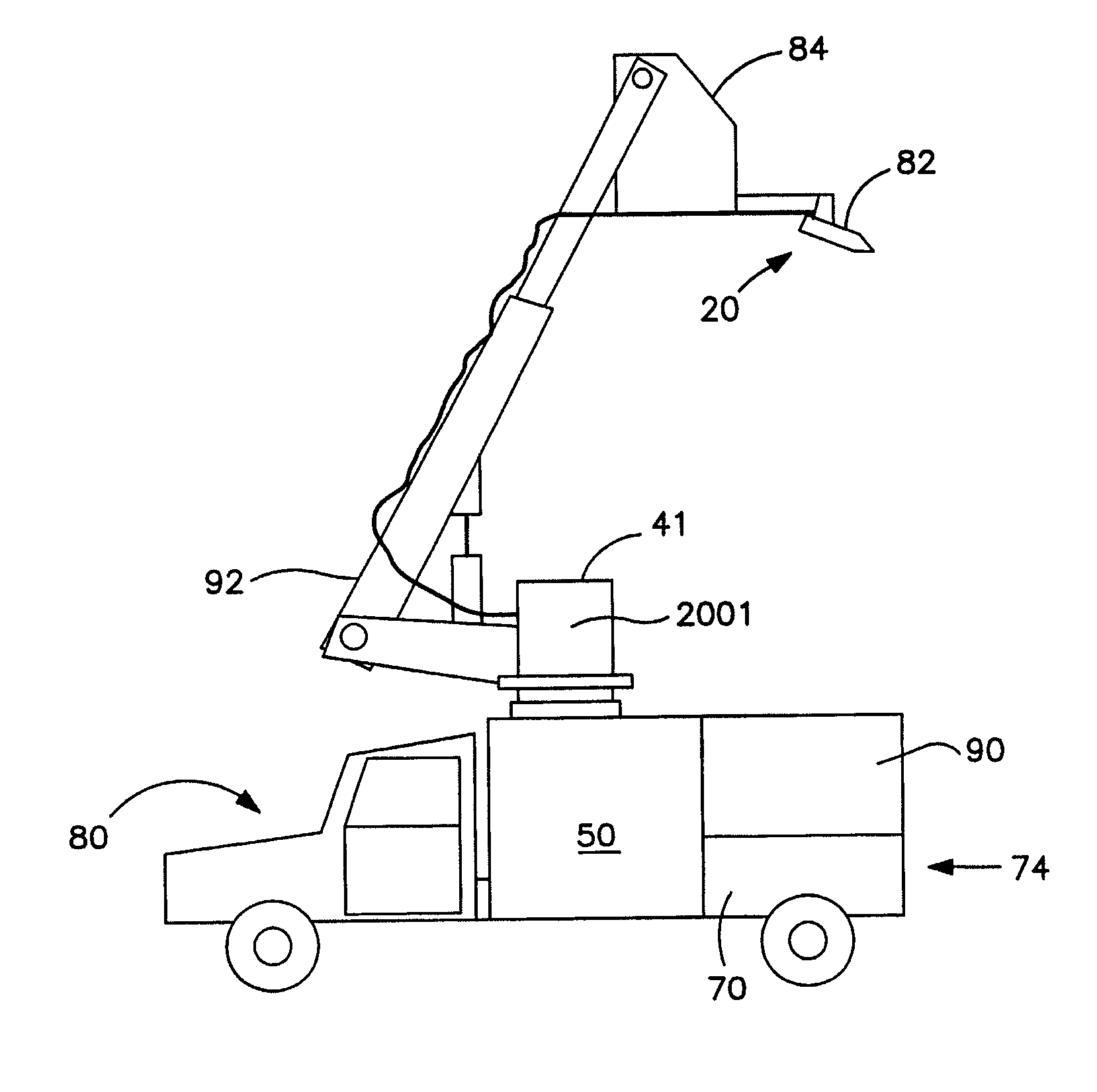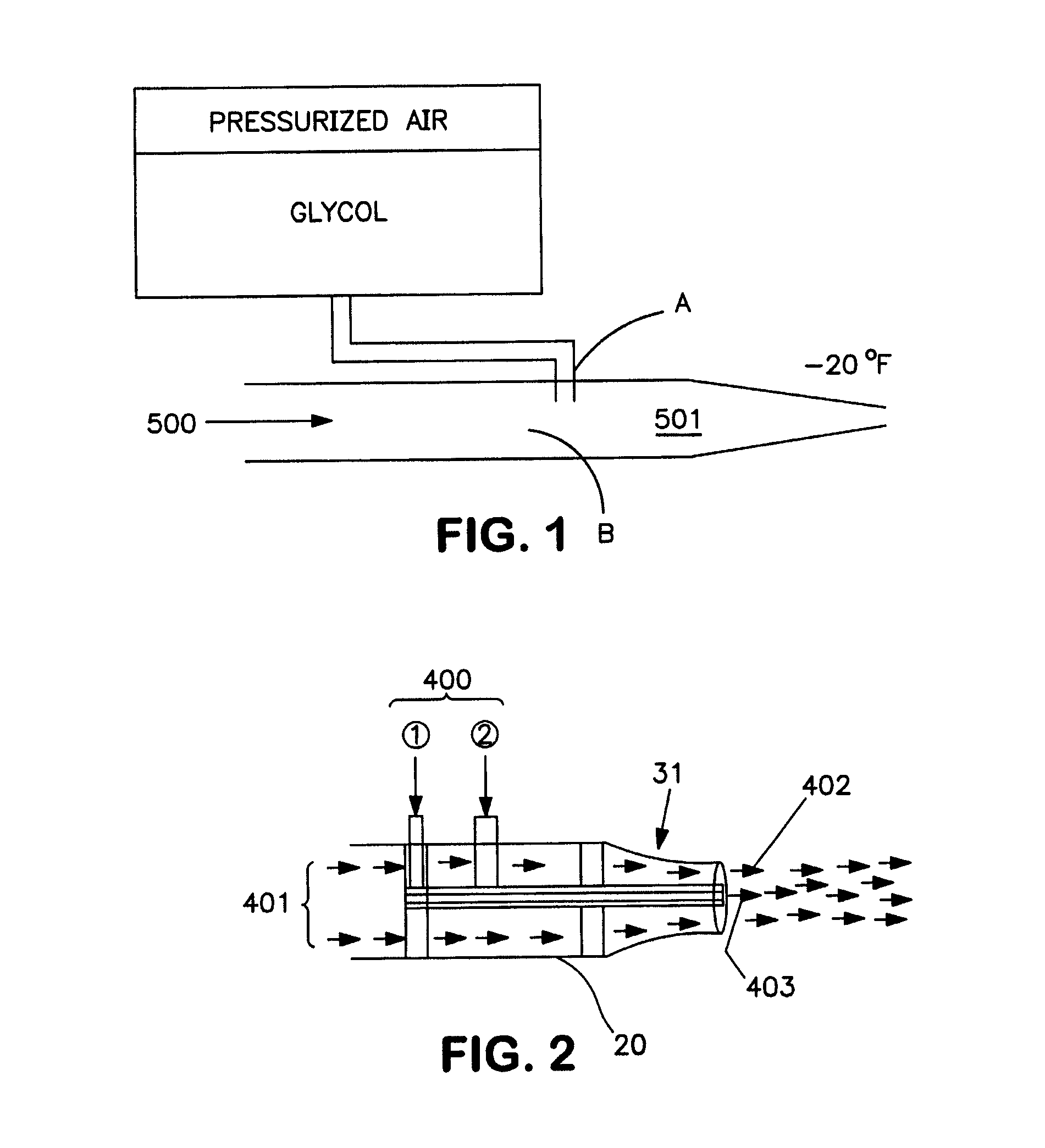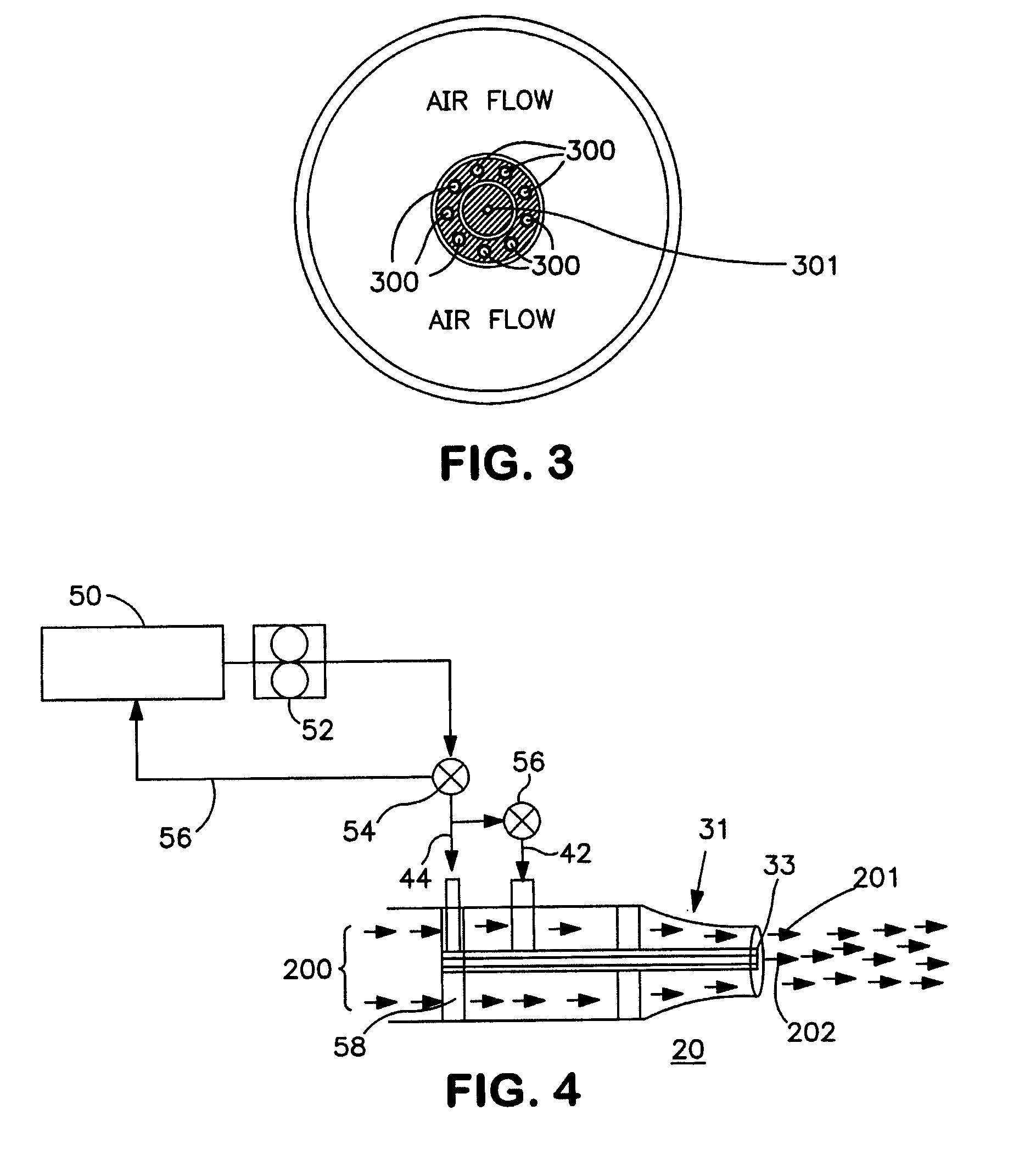Hybrid deicing system and method of operation
a hybrid deicing and aircraft technology, applied in the direction of cleaning process and apparatus, chemistry apparatus and processes, cleaning using liquids, etc., can solve the problems of significant economic and waste management problems for airline and airport operators, lack of cleaning capacity to dislodge and remove ice from aircraft wings, and high cost and toxicity of glycol, etc., to reduce glycol usage and deicing cycle time, reduce the effect of ice removal and ice removal efficiency and effectiveness
- Summary
- Abstract
- Description
- Claims
- Application Information
AI Technical Summary
Benefits of technology
Problems solved by technology
Method used
Image
Examples
Embodiment Construction
[0028]In FIG. 1, reference numeral 500 represents 400° F. air; 501 represents 50-200 mph. Referring now to FIG. 2, the new stand-alone ground based hybrid deicing system 10 of the present invention, (shown in detail in FIG. 7), utilizes a specially constructed coaxial nozzle assembly 20 that simultaneously delivers two independent, high velocity deicing streams. Preferably, a deicing fluid stream is encased within a high velocity airstream. The nozzle preferably has a special 0.060 inch diameter jetting orifice that produces a conical shaped jet. (in FIG. 2, reference numeral 400 represents heated deicing fluid from the triplex pump; 401 represents pressurized air from the centrifugal compressor (100 Lb per min); 402 represents 800 mph airstream; 403 represents 800 mph deicing fluid stream (high pressure / low flow mode); and 31 represents ASME “long radius” nozzle.)
[0029]The coaxial nozzle assembly 20 is specially designed to meld two fluid flow technologies, conversion of subsonic a...
PUM
 Login to View More
Login to View More Abstract
Description
Claims
Application Information
 Login to View More
Login to View More - R&D
- Intellectual Property
- Life Sciences
- Materials
- Tech Scout
- Unparalleled Data Quality
- Higher Quality Content
- 60% Fewer Hallucinations
Browse by: Latest US Patents, China's latest patents, Technical Efficacy Thesaurus, Application Domain, Technology Topic, Popular Technical Reports.
© 2025 PatSnap. All rights reserved.Legal|Privacy policy|Modern Slavery Act Transparency Statement|Sitemap|About US| Contact US: help@patsnap.com



